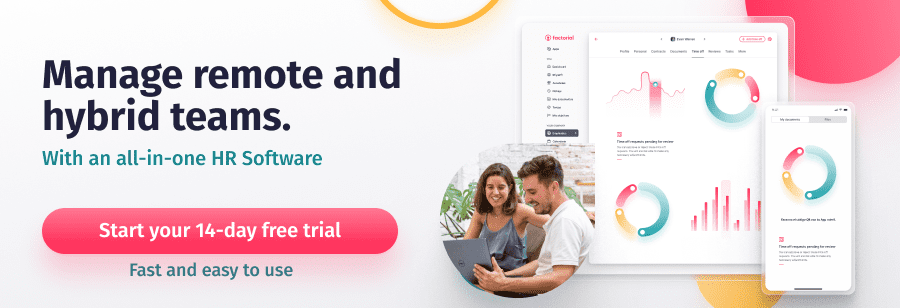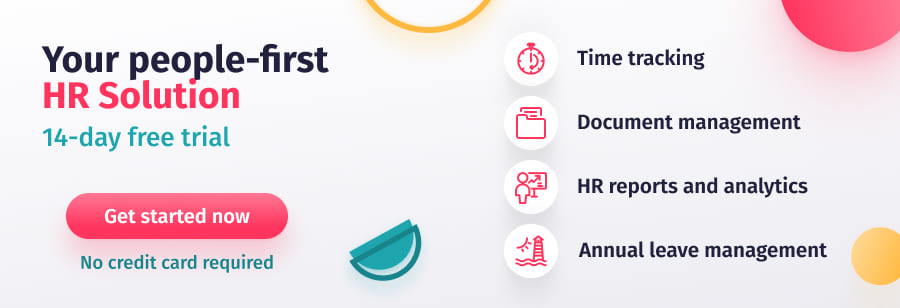A payslip is a summary of an employee’s earnings and deductions. As an employer, payroll can often be complicated. Although the main function of payroll is to pay your employees, it is vital that you get it right and keep within the law when managing it.
In this “payslip explained” article we will give you a brief payslip breakdown so that you know what needs to be included in each employment payslip. We will also look at the best ways to manage employee payslips and share some of the benefits of using payslip software and a payslip template.
- Payslip Explained: What Must I Include?
- The PAYE Payslip Explained
- What is the Best Way to Manage Employee Payslips?
- Benefits of Using Software and Templates
✅ Download Your Free Payslip Template
Payslip Explained: What Must I Include?
The Wages Act 1986 grants all employees the right to a payslip that includes their gross wage, details of all taxes and deductions, and the amount they take home (their net pay). The only exceptions to these would-be workers who are not classed as employees, such as contractors and freelancers. A payslip must be made available either as a hard copy or electronically each time an employee is paid. This might be weekly or monthly, depending on your business.
The first thing to be aware of as an employer is that rates of National Insurance and income tax change regularly in the UK. Changes are usually announced during the annual budget announcements. The Human Resources department or the payroll department needs to be ready to implement any changes as soon as they come into effect.
In addition to the Wages Act 1986, employers must comply with the more recent Employment Rights Act 1996 (Itemised Pay Statement) (Amendment) Order 2018 and include the following information on each payslip:
- Number of hours being paid
- The time period the pay covers
- Employee tax code
- Total pay before deductions (gross amount)
- Total pay after deductions (net amount)
- Amounts of any variable deductions, including National Insurance, student loan repayments and pension schemes
- Amounts of any fixed deductions, such as union subscriptions
- A breakdown of how wages will be paid
- Bonuses, maternity or statutory sick pay when applicable
The PAYE Payslip Explained
The PAYE system (Pay As You Earn) is a method of paying income tax and National Insurance contributions. As an employer, you must deduct tax and National Insurance contributions from an employee’s wages before paying them. This information must then be sent to HMRC in real-time using their Real-Time Information (RTI) system. The only exception is if an employee earns less than £120 a week, receives expenses or benefits, has another job or receives a pension.
Under RTI, information about tax and other deductions under the PAYE system is transmitted to HMRC by the employer each time an employee is paid. Once submitted, data cannot be changed so it is vital to make sure the right information is included so that HMRC can calculate the correct coding notice.
The PAYE coding notice includes:
- Employee personal and contact information
- The employee tax code(s), and the name of the employer
- How HMRC have calculated the employee tax code(s)
- Notes explaining each item in the tax code calculation
- HMRC contact information.
What is the Best Way to Manage Employee Payslips?
Now that we have seen the payslip explained and we know what needs to be included, let’s take a look at the best way to manage employee payslips.
This includes:
- Recording each employee’s pay.
- Calculating deductions from their pay, including tax and National Insurance.
- Calculating National Insurance contributions that you must pay as an employer.
- Producing and distributing payslips for each employee.
- Reporting pay and deductions to HMRC
All this can be very time consuming and errors can be costly for your company. You, therefore, need to consider the best option for you and your business.
Manually
This is the cheapest option, but it is also the riskiest and most time-consuming. You need to make sure calculations and deductions are correct for each employee. You also must ensure wages are paid on time and payslips are issued correctly. Finally, you should communicate all information to HMRC through the RTI system. Any errors leave you open to hefty fines.
If you decide to run payroll manually by creating individual payslips for each employee, then we recommend using Factorial’s free payslip template to ensure you are including the right information. Our UK payslip template specifies all the different information which must be included to make the payslip legitimate.
Hire an accountant
If all this information is overwhelming you might be tempted to hire an accountant. Whilst this will reduce the risk of making errors and take up less of your Human Resources department’s time, the downside is it can significantly ramp up your costs.
Payroll software
The third option, which most companies tend to opt for, is using payroll and HR software. This is the cheapest, least time-consuming and safest option and it can help you run your payroll accurately and efficiently.
Benefits of Using Software and Templates
Ultimately, whether you choose to manage your payslips manually, through an accountant or using software is up to you and your business needs. Although internal manual systems can initially seem like the cheaper option, there are a number of benefits and long-term gains if you choose to use payroll software and a payslip template:
- Using software and an online payslip template marks you as a modern employer and makes life easier for your company’s HR professionals.
- Payroll software ensures that payslip information is always up to date and that you have access to all payroll data at the click of a button.
- Using a payslip Excel template means you can create employee payslips simply, quickly and accurately.
- If you purchase software with a payslip download feature, such as Factorial’s integrated payroll solution, it allows you to generate personalised payroll reports when needed. It also means that each employee has their payslip explained clearly and they can access it from their mobiles as soon as it has been sent to them. No more issues with slow postal services or delays when the payroll manager is off work.
- Electronic payslips save your company money, especially if you are a large organisation. This includes labour costs, as well as the cost of printing and distribution. It also saves time so that your HR professionals can focus on more productive tasks such as supporting employees and increasing employee satisfaction within the company.
- Online payslips are better for the environment and records to take up less physical space.
- Factorial’s payslip feature guarantees the safety of personal data through its powerful encryption system and single access for each user.
Kick start your HR team’s digital transformation with Factorial – check out all of our features!




